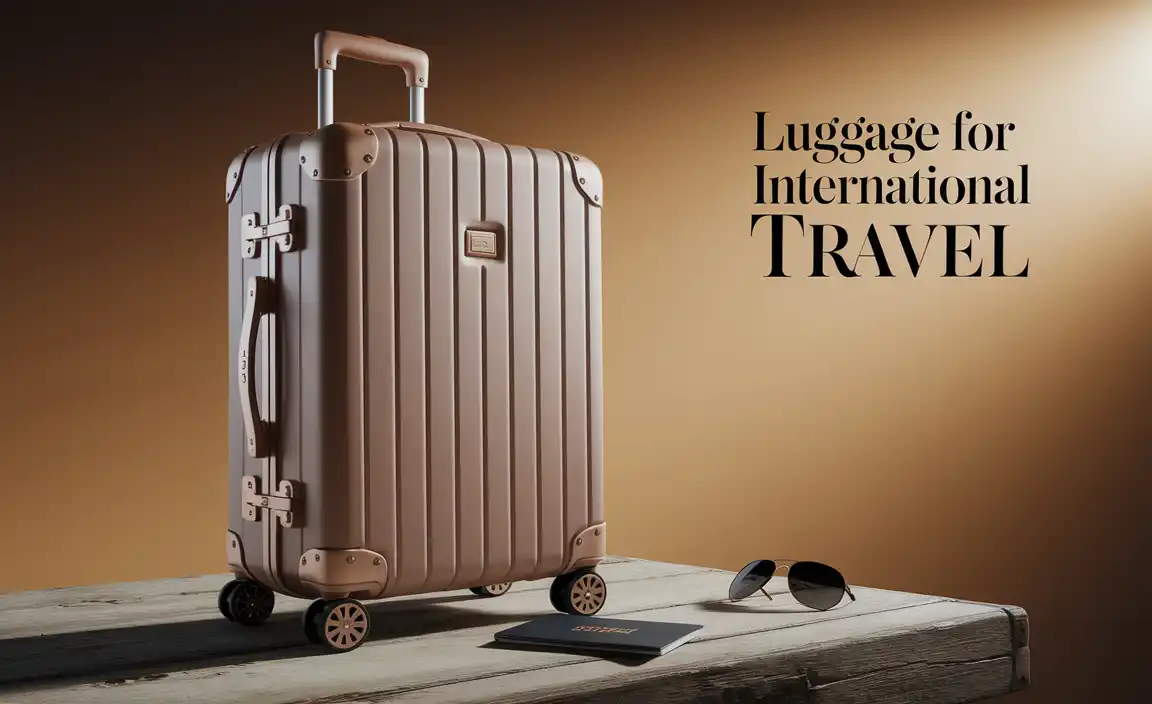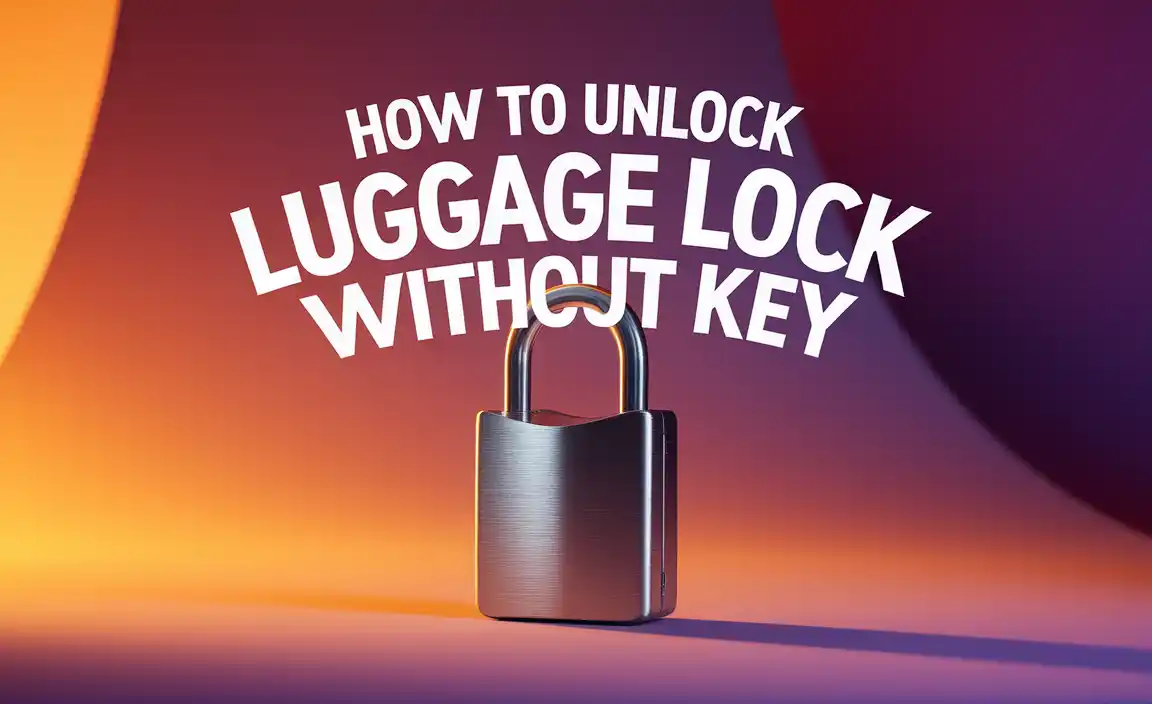Master Austria’s public transport with this easy-to-follow guide. Get where you need to go simply and affordably, covering trains, buses, and trams for a stress-free Austrian adventure.
Planning a trip to Austria? Wonderful! This beautiful country offers stunning landscapes and rich cultural experiences. One of the easiest ways to explore its charming cities and breathtaking countryside is by using its fantastic public transport system. But if you’re new to it, it can seem a little daunting. Don’t worry, we’ve got your back! This guide breaks down everything you need to know about Austrian public transport, making it super simple to navigate. We’ll cover tickets, types of transport, and essential tips. Get ready to explore Austria with confidence and ease!
Austria Public Transport Cheat Sheet: Your Genius Essential Guide
Austria is renowned for its efficiency and punctuality, and its public transport system is no exception. From the bustling streets of Vienna to the serene Alps, getting around is a breeze once you know a few key things. This cheat sheet is designed for travelers like you, whether you’re a solo adventurer, a family with young children, or someone who values comfort and reliability on their journeys. We’ll equip you with the knowledge to make your travels smooth, enjoyable, and budget-friendly.
Understanding the Austrian Public Transport Network
Austria boasts an integrated public transport system that efficiently connects cities, towns, and even rural areas. This network primarily consists of:
Trains: The backbone of long-distance and inter-city travel.
Buses: Extensive networks within cities and for regional travel.
Trams (Straßenbahn): Predominantly found in major cities, offering a convenient way to get around urban centers.
U-Bahn (Metro): Vienna has an excellent subway system.
S-Bahn (Suburban Train): Connects suburban areas to city centers, often operating like local trains within cities.
The National Rail Provider: ÖBB
The Austrian Federal Railways, or Österreichische Bundesbahnen (ÖBB), is the main rail operator. They run most of the long-distance and regional train services across the country. Their website and app are invaluable resources for planning journeys and purchasing tickets. You can find more information on services and journey planning at the official ÖBB website.
Navigating Tickets: Your Key to Austrian Public Transport
Understanding ticket systems is crucial for any traveler. Austria’s system is generally straightforward, but there are a few nuances to be aware of.
Types of Tickets & How to Buy Them
1. Single Tickets: For one-way journeys. These are available for purchase at ticket machines, counters, the ÖBB website/app, or sometimes directly from the bus/tram driver (though this is less common and often more expensive).
2. Day Passes (Tageskarte): Ideal if you plan multiple trips within a city or region in a single day. They offer great value and convenience.
3. Weekly/Monthly Passes (Wochenkarte/Monatskarte): For longer stays, these can be very economical.
4. Regional Passes: Many regions offer specific passes that cover a variety of transport options within that area.
5. Deutschland-Austria Ticket (for cross-border travel): If you’re traveling from or to Germany, this ticket offers significant savings by covering most regional transport.
Where to Buy Tickets:
Ticket Machines: Found at most train stations and major transport hubs. They usually offer multiple language options.
ÖBB App & Website: The most convenient option for planning and purchasing train tickets. You can often find mobile tickets that you can show on your phone.
Station Ticket Counters: For more complex bookings or if you prefer human assistance.
City Transport Apps: Larger cities like Vienna have their own transport apps (e.g., Wiener Linien) where you can buy city-specific tickets.
Important Ticketing Tips
Validate Your Ticket: In many regional and local transport systems, you must validate (stamp) your ticket before you board or immediately upon boarding. Look for small machines on platforms or on the tram/bus. Failure to do so can result in hefty fines. ÖBB train tickets for long-distance journeys usually don’t need validation if they have a specific seat reservation.
Book in Advance for Savings: For long-distance ÖBB trains, booking in advance can unlock significant discounts. Look for “SparSchiene” (Sparschiene) offers.
Ticket Inspectors: Be prepared for ticket inspections. They are common, and inspectors are usually discreet but thorough. Always keep your valid ticket handy.
Children: Children often travel for free or at a significantly reduced rate. Check the specific rules for ÖBB and local transport providers. For families traveling with younger children, having easy-access diaper solutions like adult diapers for travel can remove a layer of stress, ensuring comfort for everyone on longer journeys or during transit delays.
Exploring Different Transport Modes
Let’s dive into the specifics of each transport type you’ll encounter.
Trains: Connecting Austria by Rail
Trains are your best friend for covering longer distances between cities. The ÖBB network is extensive and efficient.
Types of Trains:
Railjet (RJ) & Eurocity (EC): High-speed trains connecting major Austrian cities and international destinations. They offer comfortable seating, Wi-Fi, and sometimes dining cars.
Intercity (IC) & Eurocity (EC): Slightly slower than Railjet but still a great option for inter-city travel.
Regionalzug (R) & S-Bahn (S): Local trains that stop more frequently, serving smaller towns and connecting suburbs to city centers. These are ideal for day trips or exploring scenic routes.
Booking:
ÖBB App/Website: Highly recommended for searching schedules and buying tickets. You can select your route, date, and time, and see available ticket options and prices.
Stations: Ticket machines and counters are readily available.
Onboard Experience:
Luggage: Generally, there are no strict weight limits for luggage, but you’re expected to manage your own bags. Look for luggage racks above seats or at the end of carriages.
Wi-Fi: Available on most long-distance trains (Railjet, IC, EC). Network availability and speed can vary.
Food & Drink: Many trains have buffet cars or offer trolley service.
Buses: The Comprehensive Network
Buses complement the train network, serving areas not reached by rail and providing local transport within smaller towns.
Local Buses: Most cities and towns have their own local bus networks. Tickets are usually purchased via the local transport authority (e.g., Wiener Linien in Vienna).
Regional Buses: Connect smaller communities and can be a useful option for exploring rural areas. These are often operated by different companies; checking local tourist information or apps is best.
International Bus Services: Companies like FlixBus operate routes within Austria and to neighboring countries. These can be a budget-friendly alternative for inter-city travel.
Trams & U-Bahn: Urban Exploration
For getting around within cities, trams and the U-Bahn are indispensable.
Vienna: Vienna’s public transport, managed by Wiener Linien, is exceptionally well-integrated. The U-Bahn (underground metro), trams, and buses work seamlessly together. A single ticket or pass usually covers all these modes within Zone 100 (the core city zone). You can learn more about Vienna’s public transport on the Wiener Linien website.
Other Cities: Cities like Graz, Innsbruck, Salzburg, and Linz also have extensive tram and bus networks. Each city typically has its own ticketing system, but day passes are commonly available.
Essential Travel Tips for Austrian Public Transport
Here are some practical pointers to make your journeys smoother:
For Comfort and Convenience
Pack Smart: Travel light whenever possible. If you’re traveling with children, ensure you have easy access to essentials. For parents managing with child diapers for travel, keeping them in a readily accessible part of your luggage or a daypack is a lifesaver. Similarly, keeping travel-friendly adult diapers discreet and easy to change into can offer peace of mind for extended trips.
Stay Charged: Your smartphone is your navigation tool, ticket viewer, and information hub. Carry a portable power bank to ensure your phone stays charged.
Download Offline Maps: While Wi-Fi is common on longer journeys, offline maps are invaluable for exploring cities or in areas with spotty reception.
Learn Basic German Phrases: While English is widely spoken in tourist areas and by transport staff, knowing a few basic phrases like “Danke” (Thank you) and “Bitte” (Please) is always appreciated.
Be Punctual: Austrian transport is known for its punctuality. Arrive at your stop or platform a few minutes early to avoid missing your connection.
Luggage Considerations
Self-Sufficiency: You are generally responsible for handling your own luggage. Ensure you can manage your bags on and off trains and buses, especially if you have multiple or heavy items.
Luggage Storage: On trains, there are often overhead racks and spaces at the ends of carriages. For longer journeys, consider a carry-on that’s easy to manoeuvre.
Planning Your Journey
ÖBB Scotty App: This is the official ÖBB travel assistant app. It provides real-time departure and arrival information, journey planning, and mobile ticketing. It’s an essential download for anyone traveling by train in Austria.
Google Maps: Works well for planning city transport and walking directions.
Local Transport Websites/Apps: For specific cities, their local transport authority’s app or website will have the most detailed information on local routes, tickets, and schedules.
Ticket Price Examples and Comparisons
To give you a better idea of costs, here are some estimated prices. These can vary significantly based on booking time, time of day, and specific routes.
| Journey Type | Typical Class | Estimated Price (One Way) | Booking Tip |
| :——————- | :———— | :———————— | :—————————————————- |
| Vienna to Salzburg | 2nd | €30 – €60 | Book ÖBB SparSchiene in advance for lower fares. |
| Vienna to Innsbruck | 2nd | €40 – €80 | Look for savings on the ÖBB website. |
| Graz to Vienna | 2nd | €25 – €50 | Regional discounts might apply. |
| Vienna City (24h Pass) | N/A | €8 – €10 | Unlimited travel on U- Bahn, tram, bus within Zone 100. |
| Salzburg City (24h Pass) | N/A | €4 – €6 | Covers bus and some local transport. |
Note: These are rough estimates. Always check the latest prices on the ÖBB website or the relevant local transport provider’s platform.
Special Considerations for Travelers
Traveling with Children and Diapers
Traveling with children requires extra planning, especially when it comes to comfort and accessibility.
Diaper Changes: Public restrooms in train stations or on transport can be limited. Planning diaper changes before or after journeys, or utilizing your stroller or a designated quiet spot, is often necessary. Having travel-sized diaper changing mats and a discreet pouch for used child diapers can make a world of difference.
Snacks and Drinks: Pack plenty of snacks and drinks, as options on regional transport can be scarce.
Entertainment: Keep your little ones engaged with books, toys, or tablets.
Traveling with Adult Diapers
For adults who require adult diapers for travel, Austria’s public transport is generally accommodating, but planning is key.
Discretion and Comfort: Choose highly absorbent and discreet products for peace of mind. Brands offering confidence and reliability are essential for long journeys on trains or buses.
Accessibility: While not always guaranteed, some longer-distance trains and major stations may have accessible restrooms. Knowing where to look or having a trusted travel companion can be helpful.
Packing: Pack enough supplies for your journey, plus a little extra, in an accessible manner. Discreet travel bags and an understanding of where you might need to change can reduce anxiety.
Luggage and Mobility Aids
Wheelchair Access: Many newer trains and station platforms are designed to be accessible. ÖBB provides assistance services for passengers with reduced mobility. It’s advisable to book this assistance in advance through ÖBB.
Bicycles: Most ÖBB trains allow you to take your bicycle, but usually requires a special ticket and sometimes reservation, especially on busy routes or specific train types. Check ÖBB guidelines for details.
Frequently Asked Questions (FAQ)
Q1: How do I buy train tickets in Austria?
A1: You can buy train tickets from ÖBB ticket machines at stations, at ÖBB ticket counters, or most conveniently, through the ÖBB website or the ÖBB Scotty app. Booking in advance, especially for long-distance journeys, often secures lower “SparSchiene” prices.
Q2: Do I need to validate my public transport ticket in Austria?
A2: For local city transport (trams, buses, U-Bahn generally within cities like Vienna, Graz) and some regional trains, you often need to validate your ticket before* boarding or upon boarding by stamping it in a machine. Train tickets for long-distance ÖBB journeys with a specific date and time usually do not need validation. Always check the specific instructions for your ticket type.
Q3: Is public transport in Austria expensive?
A3: Austria’s public transport is generally considered reasonably priced for the quality and efficiency it offers. Buying tickets in advance, using city day passes for extensive urban travel, and opting for regional passes can make it very affordable. For long-distance travel, booking ÖBB “SparSchiene” tickets early can lead to significant savings.
Q4: Can I use my phone for tickets?
A4: Yes! The ÖBB Scotty app allows you to purchase and store mobile tickets, which are valid for boarding and inspections. Many city transport providers also offer mobile ticketing through their own apps.
Q5: What is the difference between S-Bahn and U-Bahn?
A5: U-Bahn refers to the subway or metro system primarily found in Vienna. S-Bahn (Stadtschnellbahn or Vorortelinie) are suburban trains that connect satellite towns and outer districts to the city center. In many urban areas, S-Bahn lines function similarly to rapid transit within the city itself.
Q6: Is English widely spoken on public transport?
A6: Yes, especially in major cities and on inter-city trains. Station staff and many bus/tram drivers will speak English, and information displays and announcements are often bilingual (German and English). However, learning a few basic German phrases is always a polite gesture.
Q7: What if I miss my connection?
A7: If you miss a connection due to a delay of the previous ÖBB train, your ticket is usually still valid for the next available service on the same route. For local transport, you might need to buy a new ticket. Check the specific terms and conditions of your ticket. Customer service at ÖBB stations can assist in such situations.
Conclusion
Austria’s public transport system is a traveler’s dream – efficient, extensive, and a sustainable way to see the country. By understanding the ticketing options, the different modes of transport, and employing a few savvy travel tips, you can navigate Austria with confidence and ease. Whether you’re zipping between cities on an ÖBB train, exploring Vienna’s charming streets by tram, or venturing into the countryside by bus, you’re in for a smooth and enjoyable experience. Embrace the journey, enjoy the beautiful landscapes, and let Austria’s excellent public transport be your guide to an unforgettable adventure! Happy travels!




